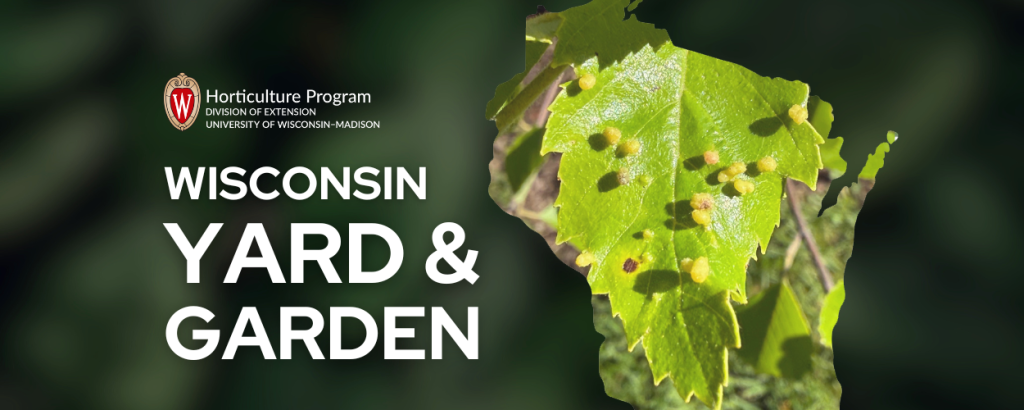
While scouting plants in your yard or garden, perhaps you have noticed unusual bumps or growth extensions on the leaf surfaces of trees, shrubs, and herbaceous perennials. These are leaf galls, a common plant abnormality that initially may cause concern, but are not actually a problem.
Galls are distorted plant tissue developed by plants due to the presence of insects or mites. Disruption of leaf development and plant hormones influence gall development, creating bumps or strange growths on leaves, leaf stalks (petioles), sometimes even flowers. Oftentimes galls are misidentified as eggs. Once the gall appears, the damage has been done, and it is too late for any controls. In addition, prevention is seldom practical because the insect or mite would need to be controlled before it got into the plant bud or shoot.
Fortunately, other than appearance, most leaf galls are not actually harming trees or landscape plants. Once galls form, even if the pest were to be controlled, the distorted growth remains for the rest of the season. In addition, several natural predators and parasites help keep gall maker populations in check.
One of the showier examples is maple bladder gall, especially on silver maples. Initially small green bumps appear on the surface of silver and red maple leaves, turning bright red later. Mites feeding on newly developing leaves are the culprit. Once again, it can look serious, but tree health is not compromised, and control is not practical or necessary. Likewise, elongated spindle galls are common on cherry, elm, and Prunus species but are just cosmetic.
Oaks often show a wide variety of leaf galls, often looking like warts, small disks, or raised areas. Oak-apple galls, the work of a small wasp, are larger, round, apple-like growths. Gouty oak gall can be more serious as galls develop within twigs and may lead to dieback of twigs.
When discussing galls, one major exception is crown gall, a serious plant disease caused by bacteria. Crown gall appears as tumor-like growth in stems just above or below the soil line. It can also form on roots, stems, trunks, or branches. Crown gall interferes with water transport and results in unhealthy, stunted plants.
Crown gall affects more than one hundred species of plants and is considered the most widely distributed bacterial disease in the world. Among the susceptible plants are apple, brambles, euonymus, grapes, lilac, pear, poplar, rose, stone fruits, viburnum, and willow. Crown gall bacteria survive in the soil and spread via soil, water, and infected plant material. Always purchase plant material from reputable nurseries. More details on crown gall can be found in our Crown Gall article.

About the Author
Bruce Spangenberg is a Horticulture Outreach Specialist with UW-Madison Division of Extension. Get answers to your lawn, landscape and garden questions anytime at “Ask Your Gardening Question.”




